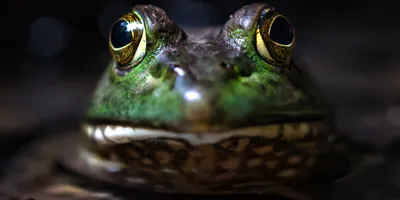
Do Frogs Have Teeth? A Look at Frog Dental Evolution
Frogs are among the most diverse and fascinating amphibians, with over 7,000 known species. Their dental structures vary dramatically—some have tiny teeth on their upper jaws, others possess fang-like structures, while some species are completely toothless. Only one frog species, Gastrotheca guentheri, has true teeth on both upper and lower jaws.
A groundbreaking study conducted by researchers at the Florida Museum of Natural History has revealed that frogs have lost teeth more than 20 times throughout their evolutionary history, making them the most frequent vertebrates to undergo tooth loss.
Understanding Frog Teeth: What Did Scientists Discover?
Scientists have long debated the presence and function of teeth in frogs. This latest study provides the most comprehensive look at tooth evolution in amphibians, using CT scans to analyze the dental structures of nearly every living frog genus.
"Through this study, we have really been able to show that tooth loss in vertebrates is largely a story about frogs, with over 20 independent losses," said Daniel Paluh, lead study author and PhD candidate at the University of Florida’s Department of Biology.*
The research also found that frogs' closest relatives, salamanders and caecilians, have retained teeth on both their upper and lower jaws throughout their evolutionary history. This suggests that the repeated loss of teeth in frogs is a unique evolutionary trait.
Why Have Frogs Lost Their Teeth So Many Times?
Tooth loss is a rare evolutionary trait among vertebrates, with only a few other groups—including birds, turtles, seahorses, and certain mammals—evolving to live without teeth. However, frogs stand out due to the sheer number of times they have lost their teeth independently. The study uncovered a key factor driving this phenomenon: dietary specialization.
Diet and Tooth Loss in Frogs
Frogs that primarily consume small insects like ants and termites were found to be more likely to lack teeth. This correlation suggests that certain frogs no longer need teeth to capture prey because they rely on their highly modified, sticky projectile tongues instead.
"Having those teeth on the jaw to capture and hold on to prey becomes less important because they're eating really small invertebrates that they can just bring into their mouth with their highly modified tongue," said Paluh.
Examples of Toothless Frogs and Their Diets
- Poison Dart Frogs – These frogs primarily feed on toxic ants and mites, swallowing them whole using their tongues. They store toxins from their prey, which they then secrete through their skin as a defense mechanism.
- Turtle Frogs (Myobatrachus gouldii) – A burrowing Australian species that hunts termites underground, navigating tunnels within termite nests.
- Pangolins & Anteaters (Toothless Mammals) – Similar to some frogs, these mammals have evolved toothlessness due to their specialized diets of ants and termites, further supporting the link between diet and tooth loss.
How Did Researchers Study Frog Teeth?
Frogs have tiny teeth—often less than a millimeter in size—making them difficult to study. However, the Florida Museum of Natural History used an advanced CT scanning project called oVert, allowing researchers to create 3D models of frog skeletons.
The oVert project is a large-scale initiative aimed at scanning 20,000 vertebrate specimens, making open-access 3D models available for scientists worldwide. This technology allowed researchers to study the dental structures of various frog species without damaging museum specimens.
"We effectively crowdsourced the data collection across our lab, including people that were not in the US at that time," said David Blackburn, Florida Museum curator of herpetology and senior study author.
Could Frogs Re-Evolve Teeth?
One of the most surprising discoveries was that some frog species may have re-evolved teeth after losing them millions of years earlier. This finding raises new questions about the genetic mechanisms regulating tooth development in amphibians.
Additionally, the researchers are still exploring whether serrated tooth-like structures in certain frog species are true teeth or simply structural adaptations.
Advanced Lab Management Certificate
The Advanced Lab Management certificate is more than training—it’s a professional advantage.
Gain critical skills and IACET-approved CEUs that make a measurable difference.
"Many questions remain about frogs' tooth biology, including how the genes that regulate their tooth production turn on and off," said Paluh.
What Does This Mean for the Study of Tooth Evolution?
The research provides crucial insights into how and why animals lose and sometimes regain teeth over evolutionary timescales. Since teeth first evolved over 400 million years ago, they have played a key role in the success of vertebrate species. Yet, some groups—including birds, whales, and frogs—have thrived without them.
By studying the genetic and evolutionary history of frog teeth, scientists hope to:
- Understand why some species lose teeth while others retain them.
- Investigate the possibility of re-evolving lost traits.
- Apply these insights to broader studies of vertebrate evolution.
Conclusion: Do Frogs Have Teeth?
The answer is both yes and no. While some frogs have tiny teeth on their upper jaws, others have lost their teeth altogether—more than 20 times in their evolutionary history. The correlation between tooth loss and specialized diets provides a strong explanation for this phenomenon, while advanced CT scanning technology has allowed researchers to study frog teeth in unprecedented detail.
As scientists continue exploring frog dentition and tooth evolution, new discoveries may further reshape our understanding of how vertebrates adapt to their environments over time. With ongoing research and cutting-edge technology, the question of “Do frogs have teeth?” may continue to reveal fascinating insights into the evolutionary past of amphibians.
This content includes text that has been generated with the assistance of AI. Lab Manager’s AI policy can be found here.












